Response of Novel Functionally-Graded Prepacked Aggregate Fibrous Concrete against Low Velocity Repeated Projectile Impacts
Abstract
1. Introduction
2. Experimental Program
2.1. Used Raw Materials
- The Portland Pozzolana Cement was utilized as per IS:1489-1991 [18] and obtained from Dalmia cement.
- The natural river sand was utilized as fine aggregate with the values of 2.41 fineness modulus and 2.65 specific gravity, in accordance with IS: 383-2016 [19].
- A 12.5 mm size of coarse aggregate was utilized as per IS: 383-2016 [20]. An apparent bulk density, specific gravity and water absorption of coarse aggregate were 1700 kg/m3, 2.69 and 0.56%, respectively.
- A commercially available water reducing agent (superplasticizer-SP), namely Tech mix, 640 was utilized to obtain the flowable grout. The water reducing agent dosage is differed from 0.3% to 0.4% by weight of cement.
- A new type of fibre, namely macro polypropylene, and a hybrid crimped-hooked end were utilized. The polypropylene fibres (PF) and steel fibres (SF) appearance are exemplified in Figure 1. The length, diameter, aspect ratio and tensile strength of PF were 45 mm, 0.8 mm, 56 and 500 MPa, respectively. Likewise, the length, diameter, aspect ratio and tensile strength of SF were 50 mm, 1 mm, 50 and 1150 MPa, respectively. The density of SF and PF were 7850 and 910 kg/m3, respectively. The PF is sourced from the Kalyani Polymers Pvt Ltd., Bangalore, India and the SF from Purushothaman steels, Nagpur, India.
2.2. Mixing Proportions
2.3. Procedure for Specimen Preparation
2.4. Projectile Impact Test
3. Discussions of Experimental Test Results
3.1. Compressive Strength of FPAFC
3.2. Projectile Impact
3.2.1. Weight Loss
3.2.2. Penetration Depth
3.2.3. Damaged Surface Area at the Top and Bottom Face
3.2.4. Damage Ratio
3.2.5. Failure Patterns
4. Evaluation of the Ejected Mass from the Top Surface of FPAFC
5. Conclusions
- The SF had a positive contribution in enhancing compressive strength compared to PF. The maximum compressive strength noted from the PC-SF specimen increased by about 59.5% compared to the RC specimen. SF’s addition in a single layer exhibited higher compressive strength than two/three-layered FPAFC. This is ascribed to effective bridging action resulting in microcrack development before failure, thus enhancing crack resistance and propagation.
- The SF and PF hybridization in three-layered FPAFC exhibited a superior compressive strength. For example, SF and PF’s hybridization in F-PC3 and F-PC6 specimens tend to rise in compressive strength by 48.0 and 47.6%, respectively. The reason for this intrinsic increment is SF and PF jointly bridging the micro-cracks and postponing their growth as a result of good fibre and matrix bonding.
- The increasing number of impacts mostly accompanied the weight loss of FPAFC specimens. The weight loss of FPAFC specimens against projectile impacts ranged from 9.1 to 14.4%, with the corresponding number of impacts ranging from 33 to 40. The number of blows required to eject the projectile was assessed. The specimens F-PC6 and F-PC7 exhibited excellent penetration resistance with the corresponding impacts of 40 and 42, respectively, as associated with RC.
- The damaged top surface area ranged from 422 to 6862 mm2 for the FPAFC specimens. The damaged areas are reduced by fibres, which prevent the specimens disintegration upon failure. This phenomenon is due to fibres existence near the impact point, which allows the absorption of impact energy and lessens the degree of damage. The maximum damaged bottom surface area was noted in the F-PC6 specimen, and the corresponding value was 10,373 mm2. Increasing the fibre dosage at the top and bottom layers of FPAFC and hybrid combination alleviates the damaged bottom surface area with an increasing number of impacts.
- Two different failure patterns were observed. The RC specimen was broken into two pieces under projectile impacts, which shows its brittle nature. Conversely, all FPAFC specimens had crating and scabbing at the top and bottom surfaces. This is due to the elastic wave propagation, in which compression and tensile nature are the main reasons for cracking of the specimen, resulting in crating and scabbing occurring on the specimen surfaces.
- A simple analytical model was used to evaluate the theoretical ejected mass from the top surface of the FPAFC specimens. The analytical model’s predicted values were in good agreement with the experimental values, with the maximum percentage error being 10.5%. Therefore, the used model for finding ejected mass is practicable and rational when used for concrete composites.
Author Contributions
Funding
Institutional Review Board Statement
Informed Consent Statement
Data Availability Statement
Acknowledgments
Conflicts of Interest
References
- Najjar, M.F.; Soliman, A.M.; Nehdi, M.L. Critical overview of two-stage concrete: Properties and applications. Constr. Build. Mater. 2014, 62, 47–58. [Google Scholar] [CrossRef]
- Rithanyaa, R.; Murali, G.; Salaimanimagudam, M.P.; Fediuk, R.; Abdelgader, H.S.; Siva, A. Impact response of novel layered two stage fibrous composite slabs with different support type. Structures 2021, 29, 1–13. [Google Scholar] [CrossRef]
- Manohar, T.; Suribabu, C.R.; Murali, G.; Salaimanimagudam, M.P. A novel steel-PAFRC composite fender for bridge pier protection under low velocity vessel impacts. Structures 2020, 26, 765–777. [Google Scholar] [CrossRef]
- Salaimanimagudam, M.P.; Suribabu, C.R.; Murali, G.; Abid, S.R. Impact Response of Hammerhead Pier Fibrous Concrete Beams Designed with Topology Optimization. Period. Polytech. Civ. Eng. 2020, 64, 1244–1258. [Google Scholar] [CrossRef]
- Murali, G.; Abid, S.R.; Amran, Y.H.M.; Abdelgader, H.S.; Fediuk, R.; Susrutha, A.; Poonguzhali, K. Impact performance of novel multi-layered prepacked aggregate fibrous composites under compression and bending. Structures 2020, 28, 1502–1515. [Google Scholar] [CrossRef]
- Abirami, T.; Loganaganandan, M.; Murali, G.; Fediuk, R.; Sreekrishna, R.V.; Vignesh, T.; Januppriya, G.; Karthikeyan, K. Experimental research on impact response of novel steel fibrous concretes under falling mass impact. Constr. Build. Mater. 2019, 222, 447–457. [Google Scholar] [CrossRef]
- Murali, G.; Asrani, N.P.; Ramkumar, V.R.; Siva, A.; Haridharan, M.K. Impact Resistance and Strength Reliability of Novel Two-Stage Fibre-Reinforced Concrete. Arab. J. Sci. Eng. 2019, 44, 4477–4490. [Google Scholar] [CrossRef]
- Murali, G.; Poka, L.; Parthiban, K.; Haridharan, M.K.; Siva, A. Impact Response of Novel Fibre-Reinforced Grouted Aggregate Rubberized Concrete. Arab. J. Sci. Eng. 2019, 44, 8451–8463. [Google Scholar] [CrossRef]
- Najjar, M.; Soliman, A.M.; Nehdi, M.L. Two-stage concrete made with single, binary and ternary binders. Mater. Struct. 2016, 49, 317–327. [Google Scholar] [CrossRef]
- Abirami, T.; Murali, G.; Mohan, K.S.R.; Salaimanimagudam, M.P.; Nagaveni, P.; Bhargavi, P. Multi-layered two stage fibrous composites against low-velocity falling mass and projectile impact. Constr. Build. Mater. 2020, 248, 118631. [Google Scholar] [CrossRef]
- Ramkumar, V.R.; Murali, G.; Asrani, N.P.; Karthikeyan, K. Development of a novel low carbon cementitious two stage layered fibrous concrete with superior impact strength. J. Build. Eng. 2019, 25, 100841. [Google Scholar] [CrossRef]
- Murali, G.; Ramprasad, K. A feasibility of enhancing the impact strength of novel layered two stage fibrous concrete slabs. Eng. Struct. 2018, 175, 41–49. [Google Scholar] [CrossRef]
- Prasad, N.; Murali, G. Exploring the impact performance of functionally-graded preplaced aggregate concrete incorporating steel and polypropylene fibres. J. Build. Eng. 2021, 35, 102077. [Google Scholar] [CrossRef]
- Quek, S.T.; Lin, V.W.J.; Maalej, M. Development of functionally-graded cementitious panel against high-velocity small projectile impact. J. Impact Eng. 2010, 37, 928–941. [Google Scholar] [CrossRef]
- Mastali, M.; Naghibdehi, M.G.; Naghipour, M.; Rabiee, S.M. Experimental assessment of functionally graded reinforced concrete (FGRC) slabs under drop weight and projectile impacts. Constr. Build. Mater. 2015, 95, 296–311. [Google Scholar] [CrossRef]
- Lai, J.; Yang, H.; Wang, H.; Zheng, X.; Wang, Q. Penetration experiments and simulation of three-layer functionally graded cementitious composite subjected to multiple projectile impacts. Constr. Build. Mater. 2019, 196, 499–511. [Google Scholar] [CrossRef]
- Moghadam, A.M.; Omidinasab, F.; Dalvand, A. Experimental investigation of (FRSC) cementitious composite functionally graded slabs under projectile and drop weight impacts. Constr. Build. Mater. 2020, 237, 117522. [Google Scholar] [CrossRef]
- Bureau of Indian Standards. IS 1489-1 (1991): Specification for Portland Pozzolana Cement; Third revision, Reaffirmed 2005; Bureau of Indian Standards: New Delhi, India, 2005.
- Bureau of Indian Standards. IS:383-2016, Coarse and Fne Aggegate for Cocrete—Specification; Third revision; Bureau of Indian Standards: New Delhi, India, 2016.
- ACI 304.1. Guide for the Use of Preplaced Aggregate Concrete for Structural and Mass Concrete Applications; Reapproved 1997; American Concrete Institute: Farmington Hills, MI, USA, 1992. [Google Scholar]
- ASTM C939/C939M-16a. Standard Test Method for Flow of Grout for Preplaced-Aggregate Concrete (Flow Cone Method); ASTM International: West Conshohocken, PA, USA, 2016. [Google Scholar]
- ACI544.2R-89. Measurement of Properties of Fiber Reinforced Concrete; ACI: West Conshohocken, PA, USA, 1999. [Google Scholar]
- Bureau of Indian Standards. IS: 516-1959. Indian Standard Method of Tests for Strength of Concrete; Reaffirmed 2004; Bureau of Indian Standards: New Delhi, India, 2004.
- Haridharan, M.K.; Matheswaran, S.; Murali, G.; Abid, S.R.; Fediuk, R.; Amran, Y.H.M.; Abdelgader, H.S. Impact response of two-layered grouted aggregate fibrous concrete composite under falling mass impact. Constr. Build. Mater. 2020, 263, 120628. [Google Scholar] [CrossRef]
- Afroughsabet, V.; Ozbakkaloglu, T. Mechanical and durability properties of high strength concrete containing steel and polypropylene fibres. Constr. Build. Mater. 2015, 94, 73–82. [Google Scholar] [CrossRef]
- Feng, J.; Sun, W.; Liu, Z.; Cui, C.; Wang, X. An armour-piercing projectile penetration in a double-layered target of ultra-high-performance fiber reinforced concrete and armour steel: Experimental and numerical analyses. Mater. Des. 2016, 102, 131–141. [Google Scholar] [CrossRef]
- Maho, B.; Sukontasukkul, P.; Jamnam, S.; Yamaguchi, E.; Fujikake, K.; Banthia, N. Effect of rubber insertion on impact behavior of multilayer steel fiber reinforced concrete bulletproof panel. Constr. Build. Mater. 2019, 216, 476–484. [Google Scholar] [CrossRef]
- Lee, S.; Kim, C.; Yu, Y.; Cho, J.Y. Effect of Reinforcing Steel on the Impact Resistance of Reinforced Concrete Panel Subjected to Hard-Projectile Impact. Int. J. Impact Eng. 2021, 148, 103762. [Google Scholar] [CrossRef]
- Yu, R.; Spiesz, P.; Brouwers, H.J.H. Energy absorption capacity of a sustainable Ultra-High Performance Fibre Reinforced Concrete (UHPFRC) in quasi-static mode and under high velocity projectile impact. Cem. Concr. Compos. 2016, 68, 109–122. [Google Scholar] [CrossRef]
- Liu, J.; Wu, C.; Su, Y.; Lia, J.; Shao, R.; Chen, G.; Li, Z. Experimental and numerical studies of ultra-high performance concrete targets against high-velocity projectile impacts. Eng. Struct. 2018, 173, 166–179. [Google Scholar] [CrossRef]
- Clifton, J.R. Penetration Resistance of Concrete—A Review; Special Publication; National Bureau of Standards: Washington, DC, USA, 1982; pp. 480–545.
- Wang, S.; Zhang, M.; Quek, S. Tensile strength versus toughness of cement based materials against high-velocity projectile impact. Int. J. Prot. Struct. 2011, 2, 207–219. [Google Scholar] [CrossRef]
- Arna’ot, F.H.; Abbass, A.A.; Abualtemen, A.A.; Abid, S.R.; Özakça, M. Residual strength of high strength concentric column-SFRC flat plate exposed to high temperatures. Constr. Build. Mater. 2017, 154, 204–218. [Google Scholar] [CrossRef]
- Almusallam, T.H.; Siddiqui, N.A.; Iqbal, R.A.; Abbas, H. Response of hybrid-fiber reinforced concrete slabs to hard projectile impact. Int. J. Impact Eng. 2013, 58, 17–30. [Google Scholar] [CrossRef]
- Murali, G.; Amran, M.; Fediuk, R.; Vatin, N.; Raman, S.N.; Maithreyi, G.; Sumathi, A. Structural Behavior of Fibrous-Ferrocement Panel Subjected to Flexural and Impact Loads. Materials 2020, 13, 5648. [Google Scholar] [CrossRef]
- Amran, M.; Fediuk, R.; Vatin, N.; Huei Lee, Y.; Murali, G.; Ozbakkaloglu, T.; Klyuev, S.; Alabduljabber, H. Fibre-Reinforced Foamed Concretes: A Review. Materials 2020, 13, 4323. [Google Scholar] [CrossRef]
- Wiemer, N.; Wetzel, A.; Schleiting, M.; Krooß, P.; Vollmer, M.; Niendorf, T.; Böhm, S.; Middendorf, B. Effect of Fibre Material and Fibre Roughness on the Pullout Behaviour of Metallic Micro Fibres Embedded in UHPC. Materials 2020, 13, 3128. [Google Scholar] [CrossRef]
- Bywalski, C.; Kaźmierowski, M.; Kamiński, M.; Drzazga, M. Material Analysis of Steel Fibre Reinforced High-Strength Concrete in Terms of Flexural Behaviour. Experimental and Numerical Investigation. Materials 2020, 13, 1631. [Google Scholar] [CrossRef] [PubMed]
- Mohajerani, A.; Hui, S.-Q.; Mirzababaei, M.; Arulrajah, A.; Horpibulsuk, S.; Abdul Kadir, A.; Rahman, M.T.; Maghool, F. Amazing Types, Properties, and Applications of Fibres in Construction Materials. Materials 2019, 12, 2513. [Google Scholar] [CrossRef] [PubMed]
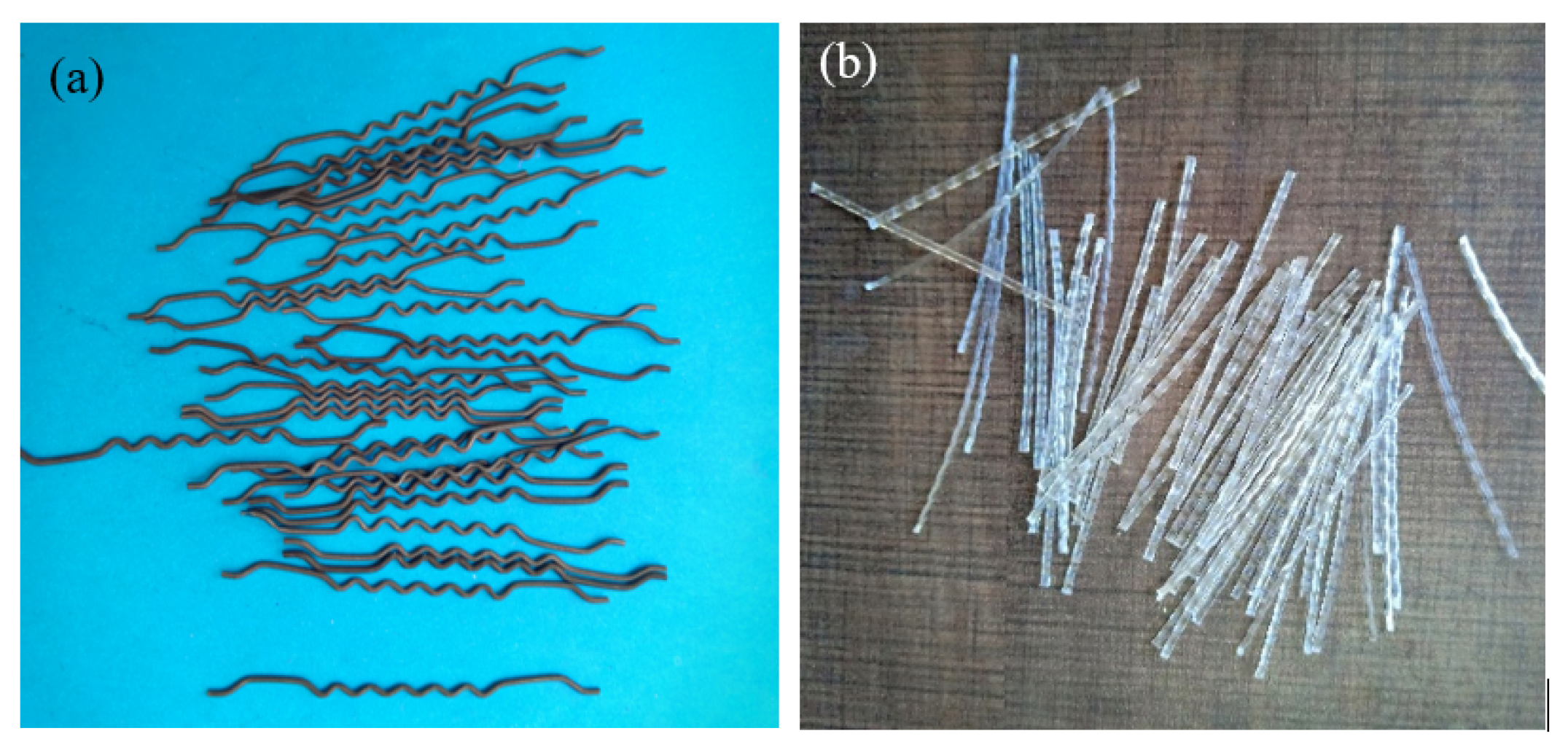
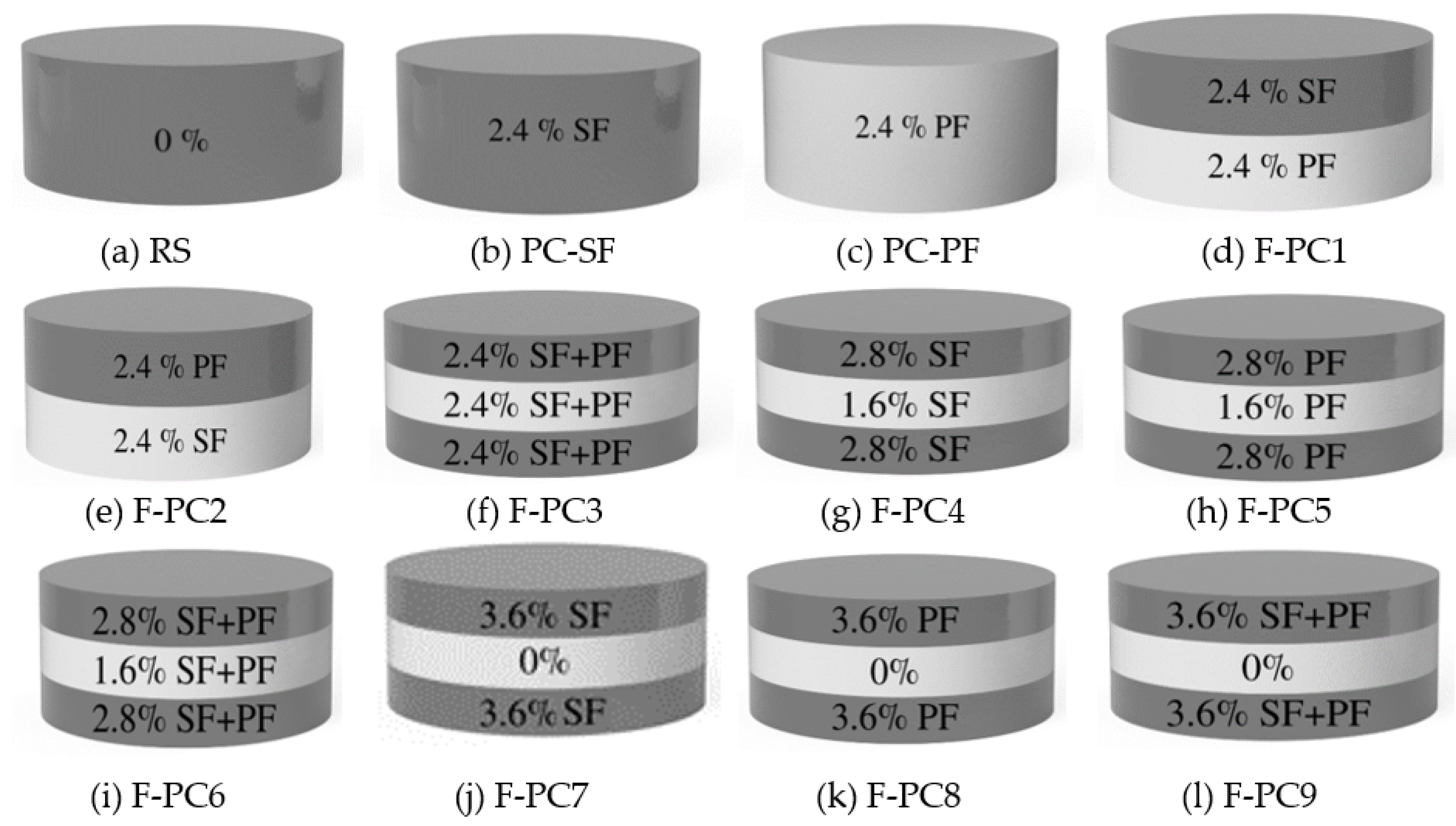



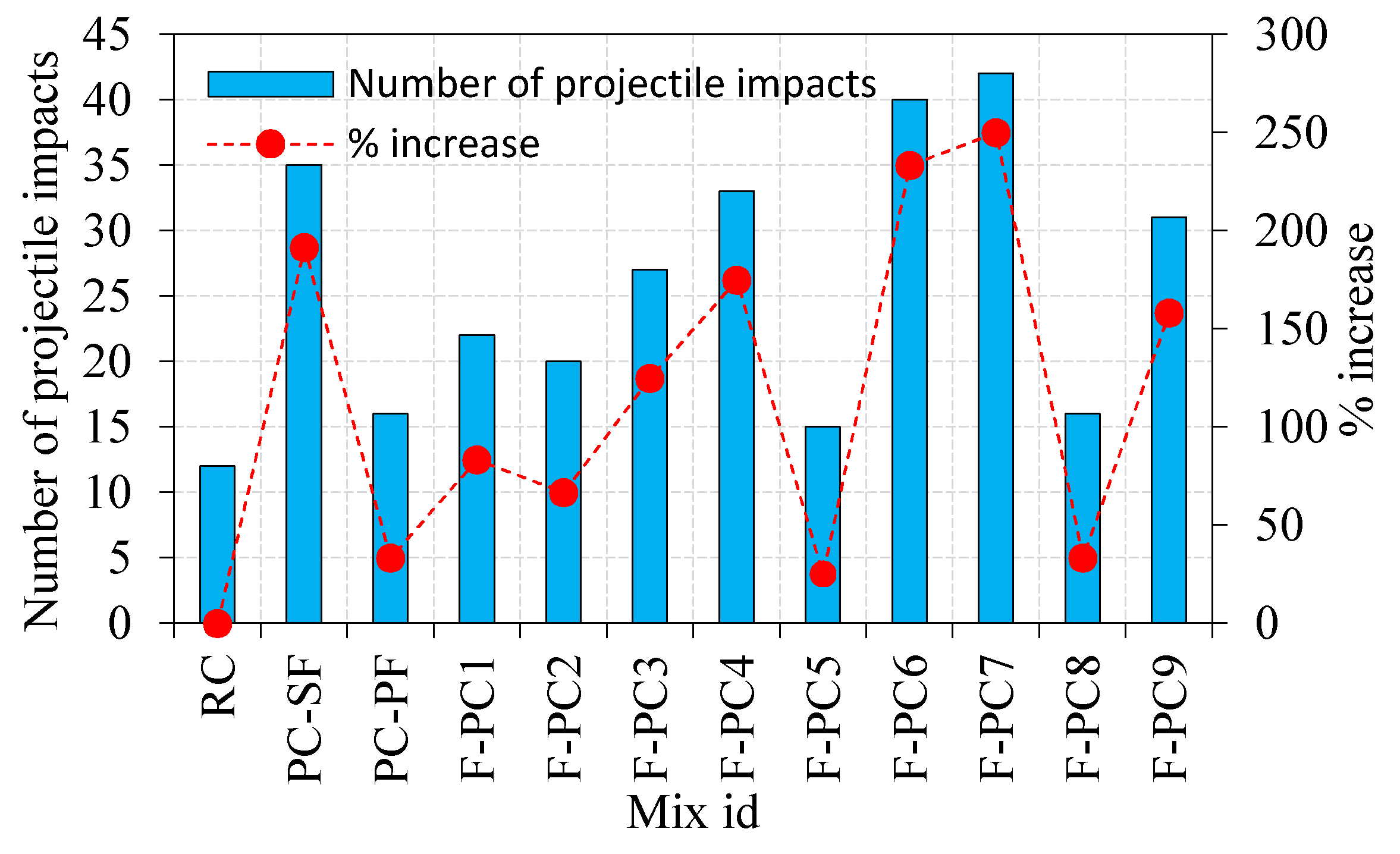

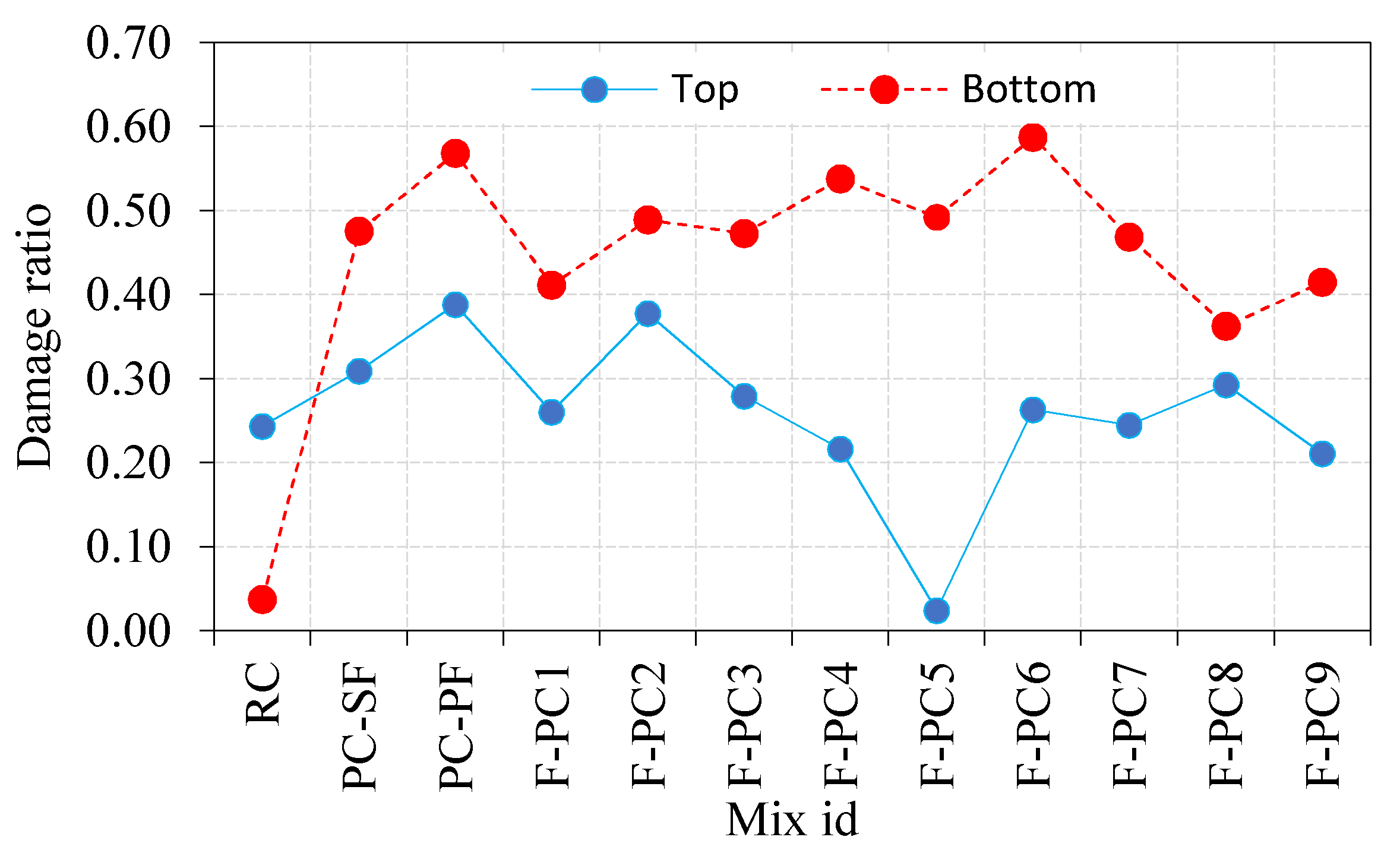

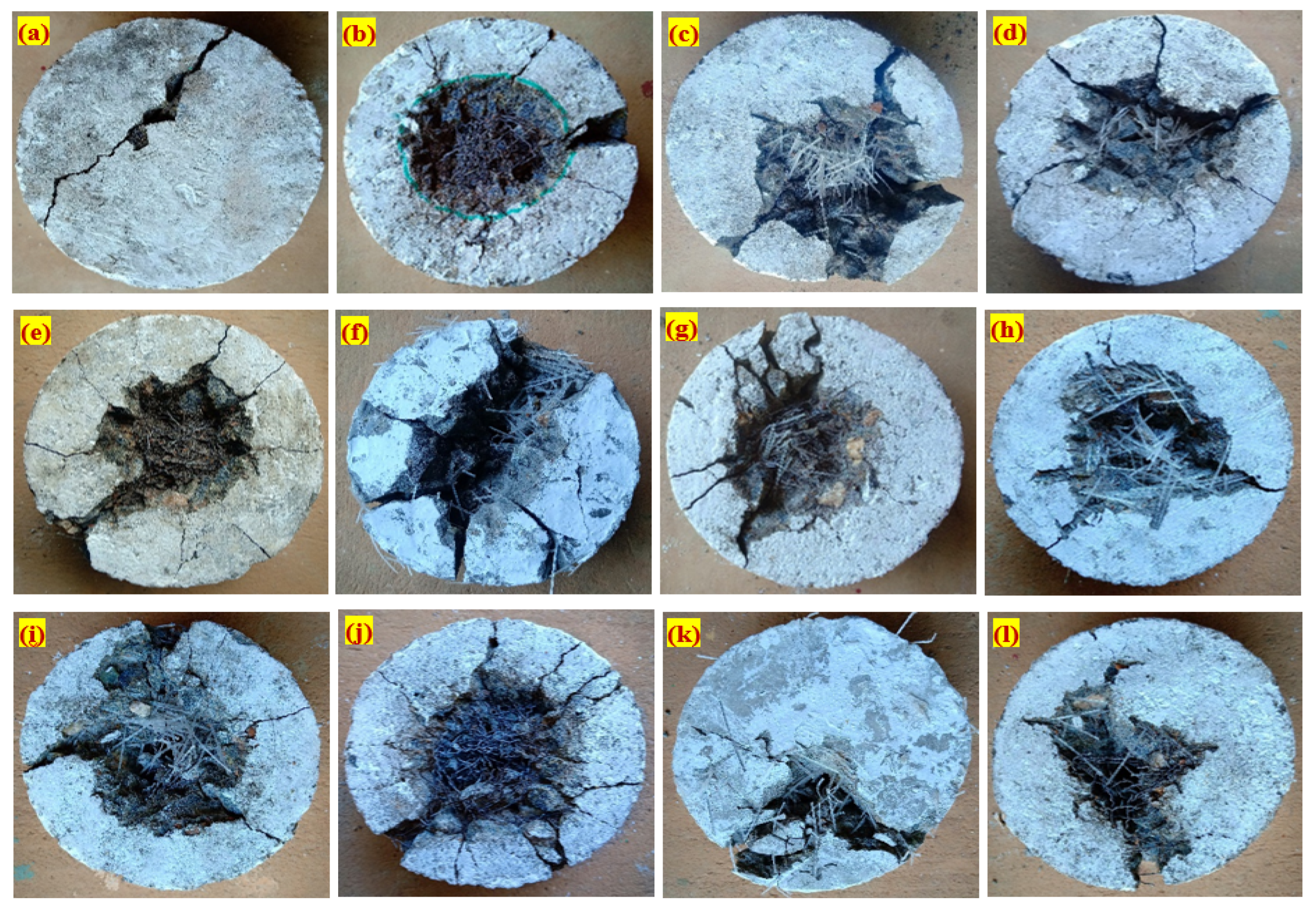
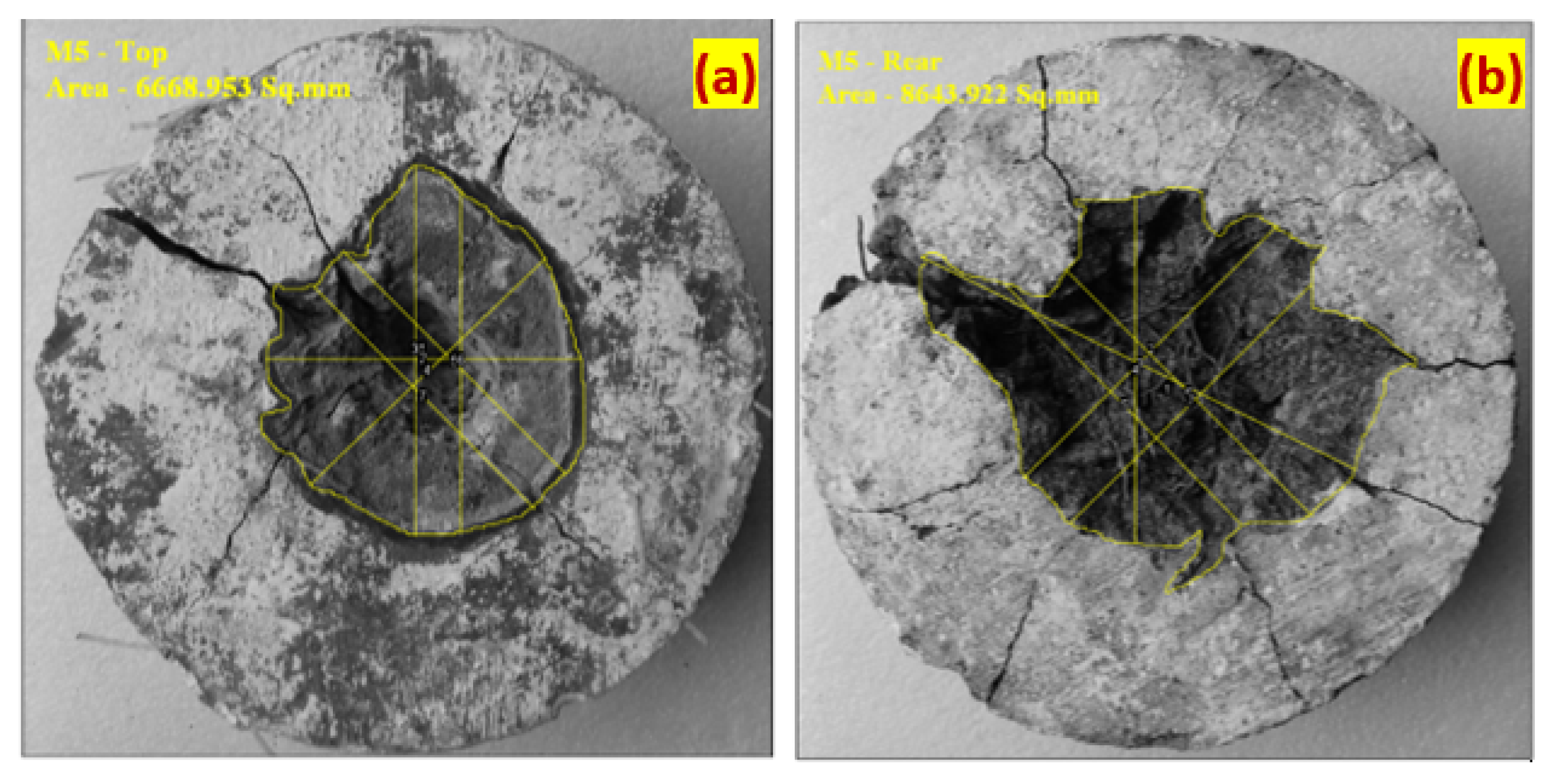
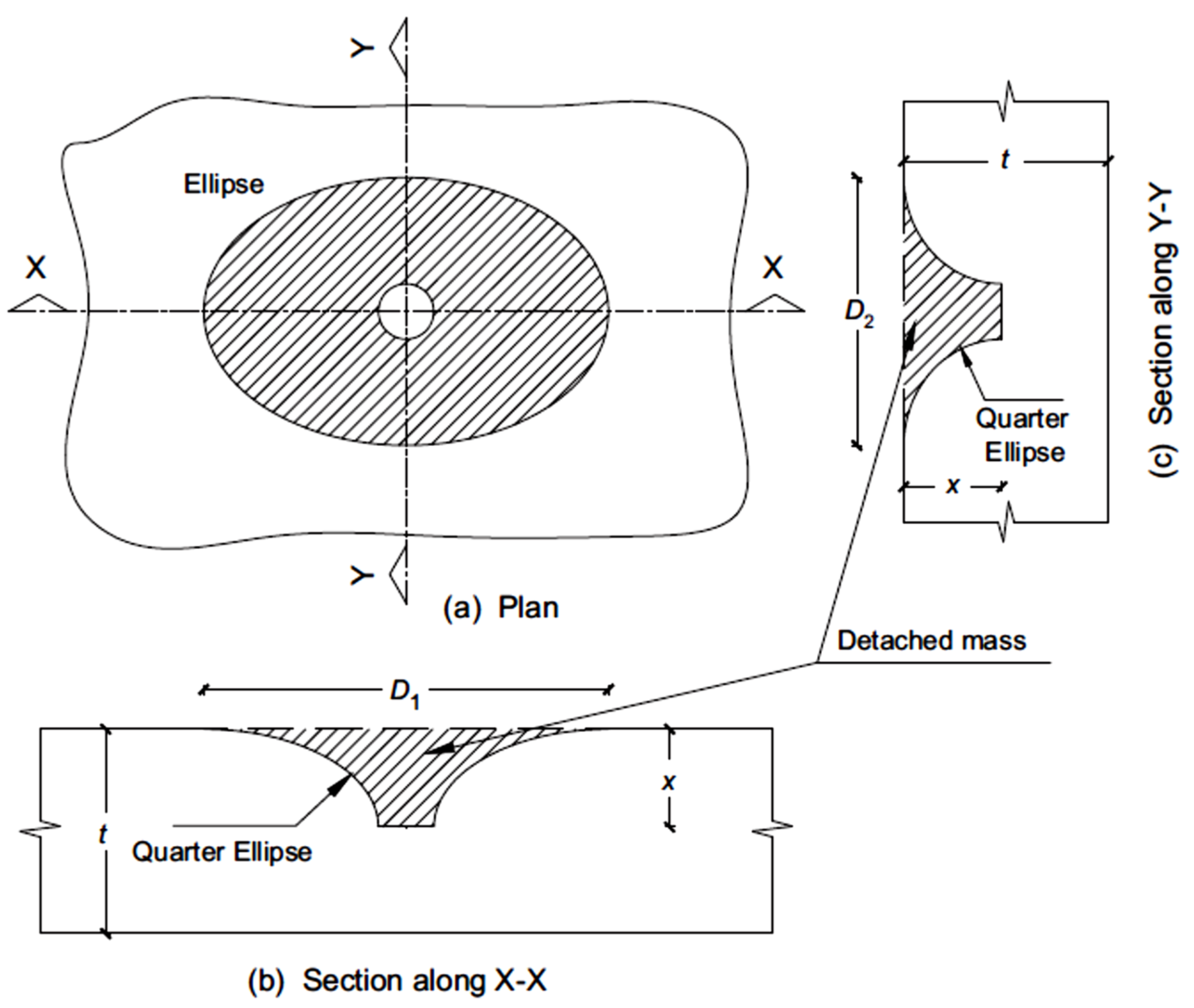
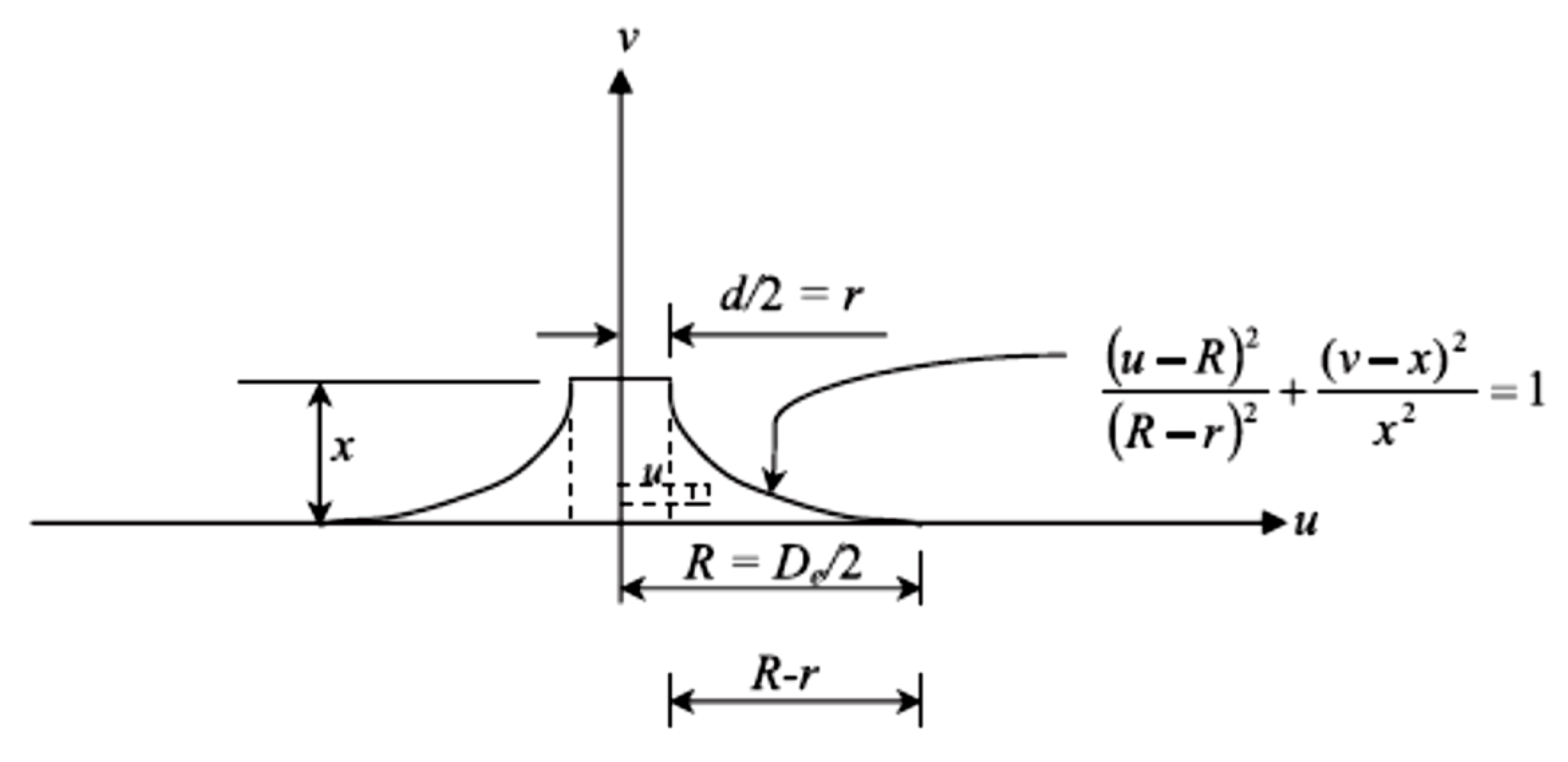
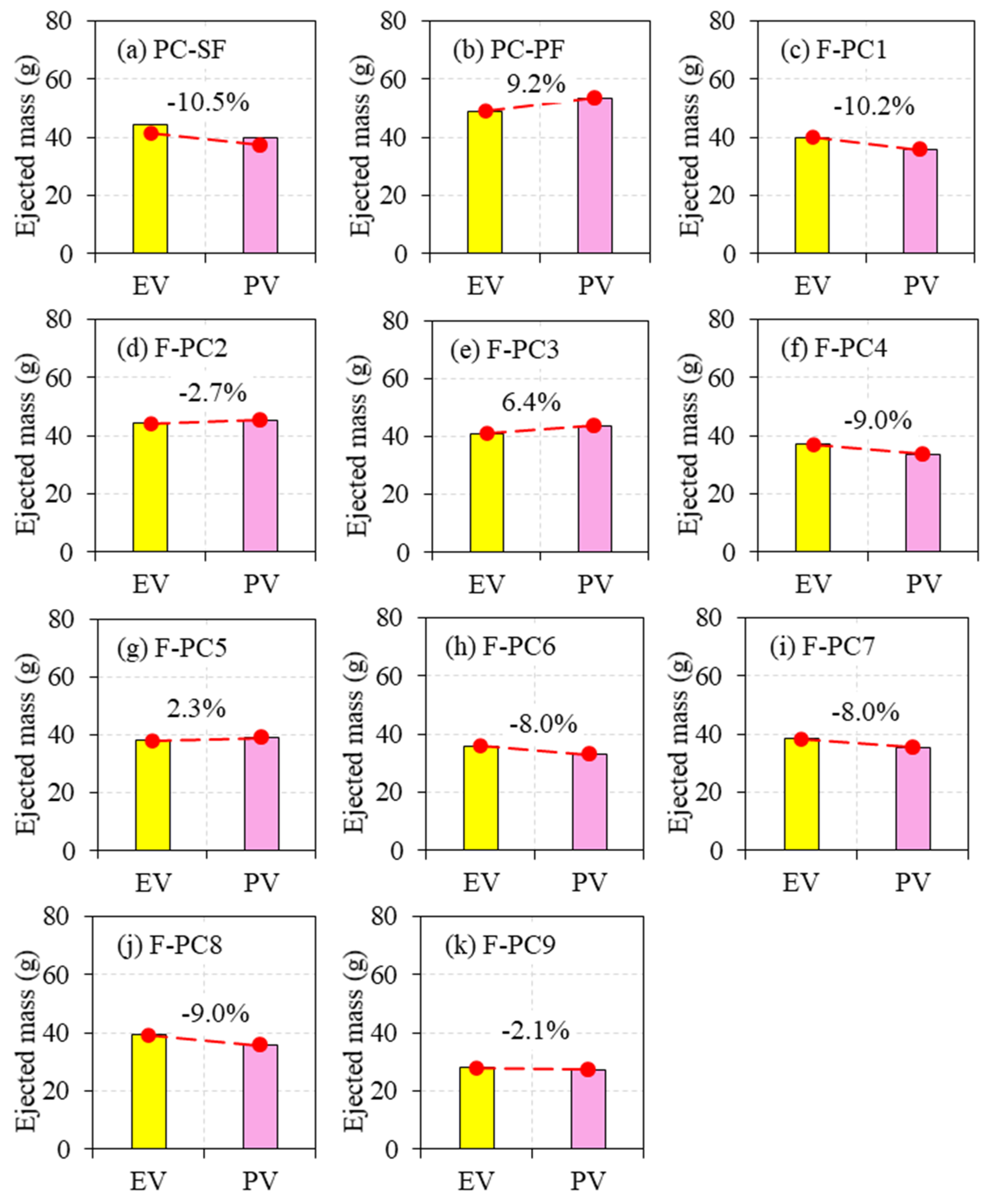
| Mix Id | s/c | w/c | Fiber Dosage (%) | SP | |||||
|---|---|---|---|---|---|---|---|---|---|
| I Layer | II Layer | III Layer | (%) | ||||||
| SF | PF | SF | PF | SF | PF | ||||
| RC | 1 | 0.45 | 0 | 0.3 | |||||
| PC-SF | 2.4 SF | 0.4 | |||||||
| PC-PF | 2.4 PF | 0.4 | |||||||
| F-PC1 | 2.4 SF | 2.4 PF | 0.4 | ||||||
| F-PC2 | 2.4 PF | 2.4 SF | 0.4 | ||||||
| F-PC3 | 1.2 | 1.2 | 1.2 | 1.2 | 1.2 | 1.2 | 0.4 | ||
| F-PC4 | 2.8 | 0 | 1.6 | 0 | 2.8 | 0 | 0.4 | ||
| F-PC5 | 0 | 2.8 | 0 | 1.6 | 0 | 2.8 | 0.4 | ||
| F-PC6 | 1.4 | 1.4 | 0.8 | 0.8 | 1.4 | 1.4 | 0.4 | ||
| F-PC7 | 3.6 | 0 | 0 | 0 | 3.6 | 0 | 0.4 | ||
| F-PC8 | 0 | 3.6 | 0 | 0 | 0 | 3.6 | 0.4 | ||
| F-PC9 | 1.8 | 1.8 | 0 | 0 | 1.8 | 1.8 | 0.4 | ||
| Compressive Strength MPa | ||||
|---|---|---|---|---|
| Mix ID | Specimen 1 | Specimen 2 | Specimen 3 | Average |
| RC | 32.18 | 29.09 | 33.85 | 31.71 |
| PC-SF | 48.9 | 52.3 | 50.5 | 50.57 |
| PC-PF | 34.19 | 41.18 | 37.51 | 37.63 |
| F-PC1 | 39.49 | 41.84 | 38.64 | 39.99 |
| F-PC2 | 39.92 | 35.74 | 41.38 | 39.01 |
| F-PC3 | 44.15 | 46.92 | 49.75 | 46.94 |
| F-PC4 | 48.05 | 49.58 | 49.27 | 48.97 |
| F-PC5 | 32.52 | 36.88 | 34.74 | 34.71 |
| F-PC6 | 45.71 | 45.79 | 48.92 | 46.81 |
| F-PC7 | 34.81 | 38.23 | 41.32 | 38.12 |
| F-PC8 | 34.44 | 32.26 | 33.41 | 33.37 |
| F-PC9 | 42.71 | 38.32 | 43.13 | 41.39 |
| Mix ID | PC-SF | PC-PF | F-PC1 | F-PC2 | F-PC3 | F-PC4 | F-PC5 | F-PC6 | F-PC7 | F-PC8 | F-PC9 |
|---|---|---|---|---|---|---|---|---|---|---|---|
| De (mm) | 57.8 | 59.8 | 47.5 | 56.5 | 56.8 | 47.6 | 28.7 | 50.1 | 54.1 | 45.9 | 39.6 |
Publisher’s Note: MDPI stays neutral with regard to jurisdictional claims in published maps and institutional affiliations. |
© 2021 by the authors. Licensee MDPI, Basel, Switzerland. This article is an open access article distributed under the terms and conditions of the Creative Commons Attribution (CC BY) license (http://creativecommons.org/licenses/by/4.0/).
Share and Cite
Prasad, N.; Murali, G.; Fediuk, R.; Vatin, N.; Karelina, M. Response of Novel Functionally-Graded Prepacked Aggregate Fibrous Concrete against Low Velocity Repeated Projectile Impacts. Materials 2021, 14, 280. https://doi.org/10.3390/ma14020280
Prasad N, Murali G, Fediuk R, Vatin N, Karelina M. Response of Novel Functionally-Graded Prepacked Aggregate Fibrous Concrete against Low Velocity Repeated Projectile Impacts. Materials. 2021; 14(2):280. https://doi.org/10.3390/ma14020280
Chicago/Turabian StylePrasad, Nandhu, Gunasekaran Murali, Roman Fediuk, Nikolai Vatin, and Maria Karelina. 2021. "Response of Novel Functionally-Graded Prepacked Aggregate Fibrous Concrete against Low Velocity Repeated Projectile Impacts" Materials 14, no. 2: 280. https://doi.org/10.3390/ma14020280
APA StylePrasad, N., Murali, G., Fediuk, R., Vatin, N., & Karelina, M. (2021). Response of Novel Functionally-Graded Prepacked Aggregate Fibrous Concrete against Low Velocity Repeated Projectile Impacts. Materials, 14(2), 280. https://doi.org/10.3390/ma14020280








